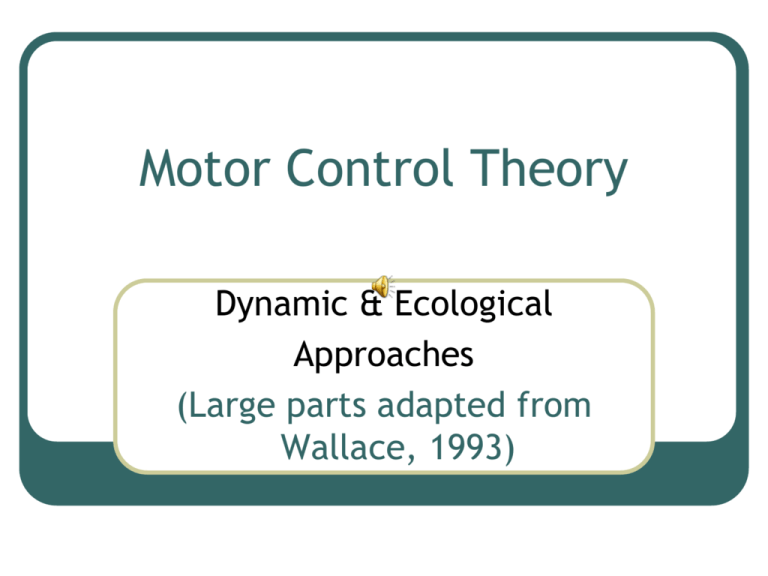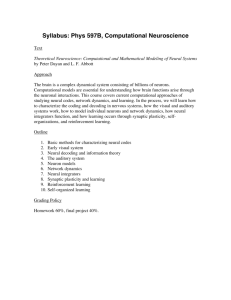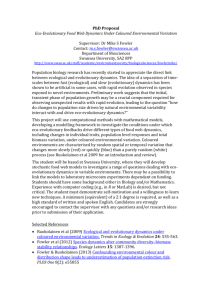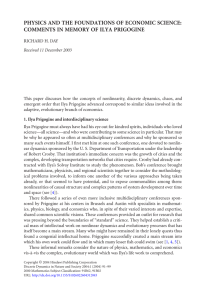Motor Control Theory 1
advertisement

Motor Control Theory Dynamic & Ecological Approaches (Large parts adapted from Wallace, 1993) Asking the right question/questions How do we move the way we do? • Seeks one solution • A causal influence •Tends to emphasize neural solutions •Tends to lead to “hypothetical constructs” to achieve solutions where neural solutions are not known •Tends to shape one’s thinking of control as a hierarchy Asking the right question/questions Why do we move the way we do? • A different focus •Tends to make us look at all possible influences on the shape of movement •Does not seek one solution, but accepts many simultaneously •Tends to shape one’s thinking of control as a heterarchy • This is the way we’ll be approaching the problem A heterarchical theory of control Or theories... All have in common the tendency to ask why rather than how • Complex systems theory • Dynamic pattern perspective & synergetics • Ecological psychology • The study of relationships among things, rather than the things themselves Leads to the study of... A heterarchical theory of control Constraints... • Things which limit our range of movements – thus “shaping” them ...and affordances • Things which permit (or even suggest) certain methods of movement or interaction with an object A heterarchical theory of control From Newell (1986) Cognition Motor abilities Sensory loss Flexibility Strength/power Individual Capabilities Cardiovascular Speed/accuracy requirements Surface type Lighting Environmental Constraints Visual flow Environmental stability moving Task Demands seated standing Number of tasks 3 categories of constraint (+ examples) A heterarchical theory of control From Schmidt & Fitzpatrick (1993) Coordination dynamics Dynamics of CNS Dynamics of action system Dynamics of environment (neural level) (effector level) (environmental level) Connectionism Action system theory Laws of perceiving and acting (ecological psychology) Processes in coordination dynamics An example (physical world) Systems far from equilibrium Equilibrium Closed system Far from equilibrium Punch hole in container Open system • There are no instructions determining the pattern of behavior – just elements of the system interacting • But this isn’t very complex Listen to this first… …then this… A more complex example The Benard instability (Prigogine & Stengers, 1984) A pan of about 1cm depth of oil random More heat heat hexagonal turbulence • Again, the system self-organizes to these patterns • Heat is a control parameter (this forces the system to change its organization) • (hexagon: from temp gradient + descent of cool molecules via gravity) A more complex example The Benard instability (Prigogine & Stengers, 1984) A pan of about 1cm depth of oil random More heat heat hexagonal turbulent • Note that each pattern does change, but it resists change • also – a property known as stability Stability and loss of stability are central to dynamic pattern theory Pause, consider, then move on… Getting too big – have to break down into multiple slide sets






